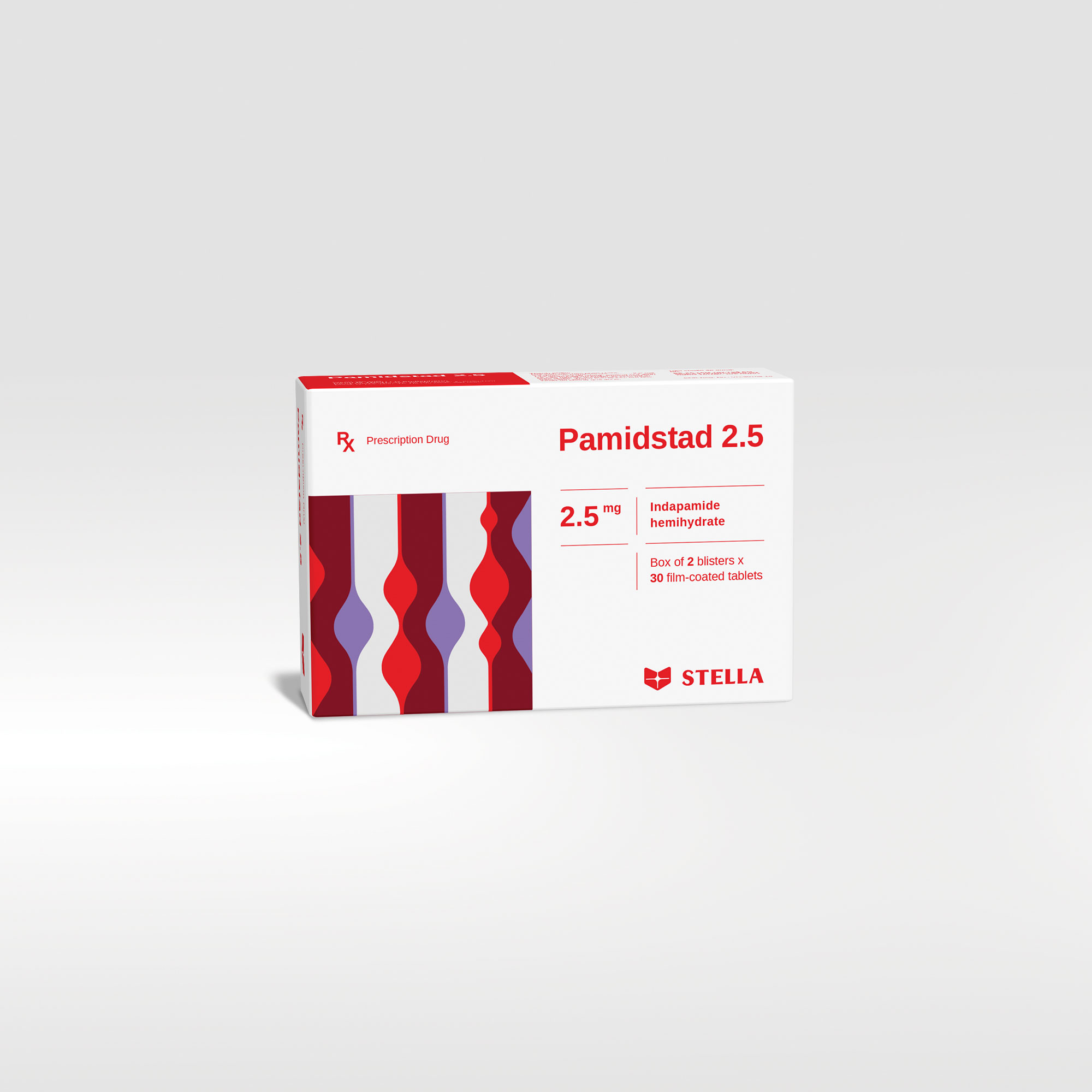Pamidstad 2.5 Rx
Indapamide is a non-thiazide sulfonamide with an indole ring, belonging to the diuretic family. It has diuretic and anti-hypertensive actions.
| Pack size | Box of 30 tablets, 60 tablets. |
| Shelf-life | 24 months |
| Composition | Indapamide hemihydrate |
| Dosage forms and strengths | Film-coated tablet: 2.5 mg. |

